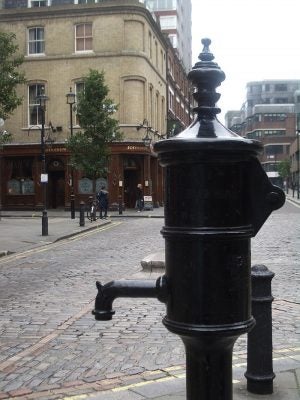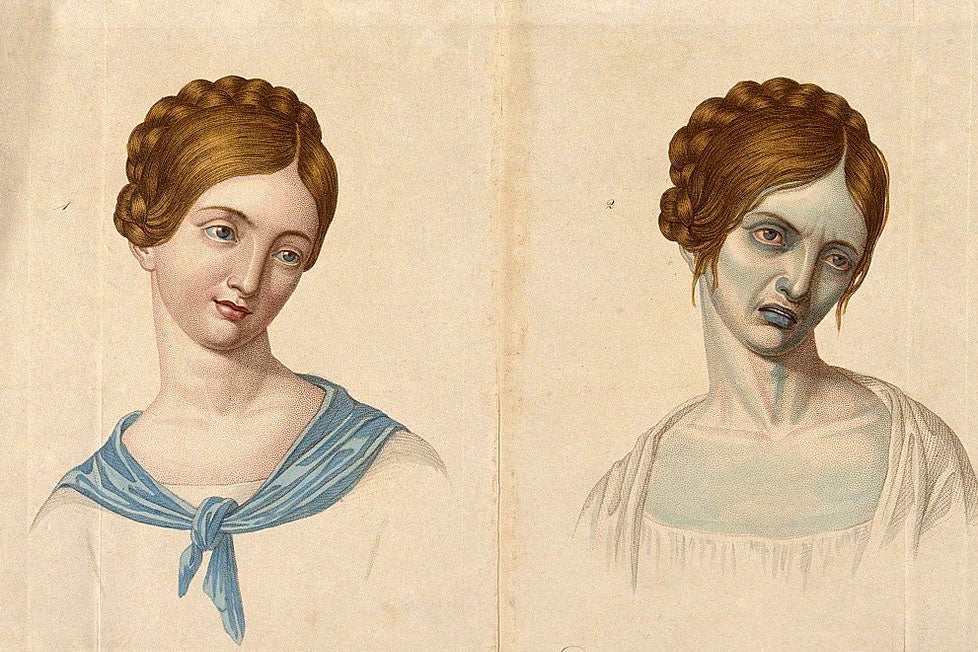在新一屆聯合國大會召開之際,《紐約時報》刊登一篇對台灣外交部長吳釗燮的專訪,指出台灣雖被排除在聯合國外,但仍在國際社會的很多領域積極展現其影響力。
《紐約時報》9月21日星期五的這篇報導說,在中國的打壓之下,台灣雖無法在聯合國發聲,但聯合國部分會員國仍會聲援台灣,其中包括海地、巴拉圭、馬紹爾群島等。報導還援引美國西東大學的法律教授路易斯的話指出,台灣對聯合國目標的參與儘管是非正式的,仍然彰顯了其對國際社會有所貢獻的決心。她說,台灣近年來已成為亞洲國家中的人權領袖,與中國的威權式政府有著強烈對比。
美國副國務卿佐利克在敦促中國在國際事務中發揮積極作用時曾提出“利益有關方”這一表述。路易斯教授說,台灣目前正主動在國際社會發揮“利益有關方”的作用。吳釗燮說:“即使無法和其他民主國家建立正式外交關係,台灣仍有很好的機會以非正式方式跟那些國家往來。”
台灣決定今年不提入聯案,而是派行政院政務委員唐鳳等官員到紐約參加一系列活動。台灣官員雖無法參與聯合國大會,但會在一系列周邊活動中宣傳台灣在致力落實聯合國可持續發展目標等項目中所作出的貢獻。
《紐約時報》這篇發自台北的報導說,聯合國甚至不承認台灣的中華民國護照,即使台灣觀光客純粹想欣賞一下聯合國的藝術品,也不得其門而入。
台灣外交部長吳釗燮上週六在美國《外交家》(The Diplomat)網站撰文強調,聯合國誤用1971年的2758號決議案,把排除及孤立台灣合理化。他說,這個決議並沒有處理台灣和台灣人民在聯合國的代表權問題,也沒有定義台灣與中國的關係。
吳釗燮部長在這篇專訪中說,台灣有自己的政府、軍隊、貨幣、還有在大多數國家都可以使用的護照,卻無法進入聯合國。吳釗燮問:“為什麼台灣被排除在外,台灣人民一直都在問。”
John Snow - Wikipedia
https://en.wikipedia.org/wiki/John_Snow
John Snow (15 March 1813 – 16 June 1858) was an English physician and a leader in the adoption of anesthesia and medical hygiene. He is considered one of ...
Fields: Epidemiology
Known for: Anaesthesia; Locating source of a ...
Article on JSTOR Daily on the pioneering work of the 19th-century physician John Snow, who was able to track a London outbreak of cholera to one particular water pump.
An 1854 cholera outbreak in London confounded those who thought the disease was caused by miasma, or foul air. Enter John Snow, who had already made a name for himself by administering chloroform to Queen Victoria during childbirth. Snow was skeptical of the reigning miasmatic theory of disease because of his own experiences fighting cholera. Even though he pre-dated germ theory and didn’t know that a bacterium caused cholera, he nonetheless tracked the outbreak of the disease.
According to evolutionary biologist Susan Bandoni Muench, in the mid-nineteenth century, London had a population density greater than Manhattan’s today. Sanitary conditions weren’t particularly good even for the upper classes, while at the bottom rungs at least 100,000 people scavenged rags, bones, coal scraps, and night soil.

During an earlier cholera outbreak in London, Snow wondered how the “blue death”—so called because of the blue tinge of the victims’ skin—spread. In an 1849 monograph, he postulated that cesspools might be spreading human waste to drinking water. This idea was met with scorn. For several years he mapped past incidences of the disease, compared neighborhoods and neighbors, and virtually invented epidemiology.
When the 1854 epidemic hit, killing 700 people in a matter of weeks, Snow was ready. He knocked on doors and interviewed families with cholera. What united all the cases? They got their water at this Broad Street pump in the Soho neighborhood. Snow’s research was reinforced by the Reverend Henry Whitehead, who initially doubted Snow’s thesis. But Whitehead found the same Broad Street pump connection by interviewing those locals who hadn’t gotten cholera; these people hadn’t used that pump.
The water pump’s handle was removed to render it inoperable. Cases of cholera plummeted afterwards. Snow himself noted that the epidemic was probably petering out by then anyway, as epidemics tend to do. But shutting the pump down clearly had an effect on the mortality of the epidemic.

Snow thought of cholera’s spread as analogous to a gas’s diffusion, but in the medium of water, not the air as the miasmatists had it. And Snow really knew his gasses, since he had been experimenting for years on chloroform, ether, ethyl nitrate, carbon disulphide, benzene, and several other potential anesthetics. These experiments were performed on animals and… himself.
Epidemiologist A.R. Mawson suggests that “extensive and prolonged self-experimentation with anaesthetics over a 9-year period led to Snow’s renal failure, swollen fingers and early death from stroke.” Snow was only 45 when he died. An early bout with tuberculosis and a probable vitamin D deficiency from his vegetarian diet (since the age of 17) wouldn’t have helped.
Snow followed an exemplary lifestyle by today’s standards—he didn’t drink, didn’t eat meat, and exercised vigorously. He even distilled his own water while he lived in the heart of the Soho epidemic. His work ethic seems admirable, too. But he couldn’t know his very work was hazardous to health. Exposure to anesthetic gasses damaged kidneys and livers, as well as the nervous and reproductive systems.
For public health, Snow sacrificed his own.
----
23歲時,學誠法師第一次成為一座寺廟的方丈,49歲時,他擔任了中國共產黨控制的佛教協會的會長。許多人認為他屬於百年來中國佛教最重要的改革者之一。但今年夏天,這些世俗成就都消失了。
被指控猥褻女弟子和財務問題之後,52歲的學誠在最近幾週裡被剝奪了頭銜。他成為了中國「#MeToo」(我也是)運動中被擊倒的最重要的全國機構領導者,也是一個有政治關係的人在中國因性行為不端的指控而倒台的罕見例子。
#Metoo在中國:佛界一號人物釋學誠辭職- BBC News 中文 - BBC.com
https://www.bbc.com/zhongwen/trad/chinese-news-45194172
Translate this page
Aug 15, 2018 - 學誠於2006年開通博客,2009年起用中文、英文、法文等十種語言在互聯網上弘揚佛法,被譽為最會利用互聯網的法師。在社交媒體微博上,學誠有 ...Translate this page
釋學誠- 維基百科,自由的百科全書 - Wikipedia
https://zh.wikipedia.org/zh-tw/释学诚
Translate this page
學誠法師,俗名傅瑞林,1966年10月3日(農曆丙午年八月十九)出生於福建仙遊。Translate this page


沒有留言:
張貼留言
注意:只有此網誌的成員可以留言。